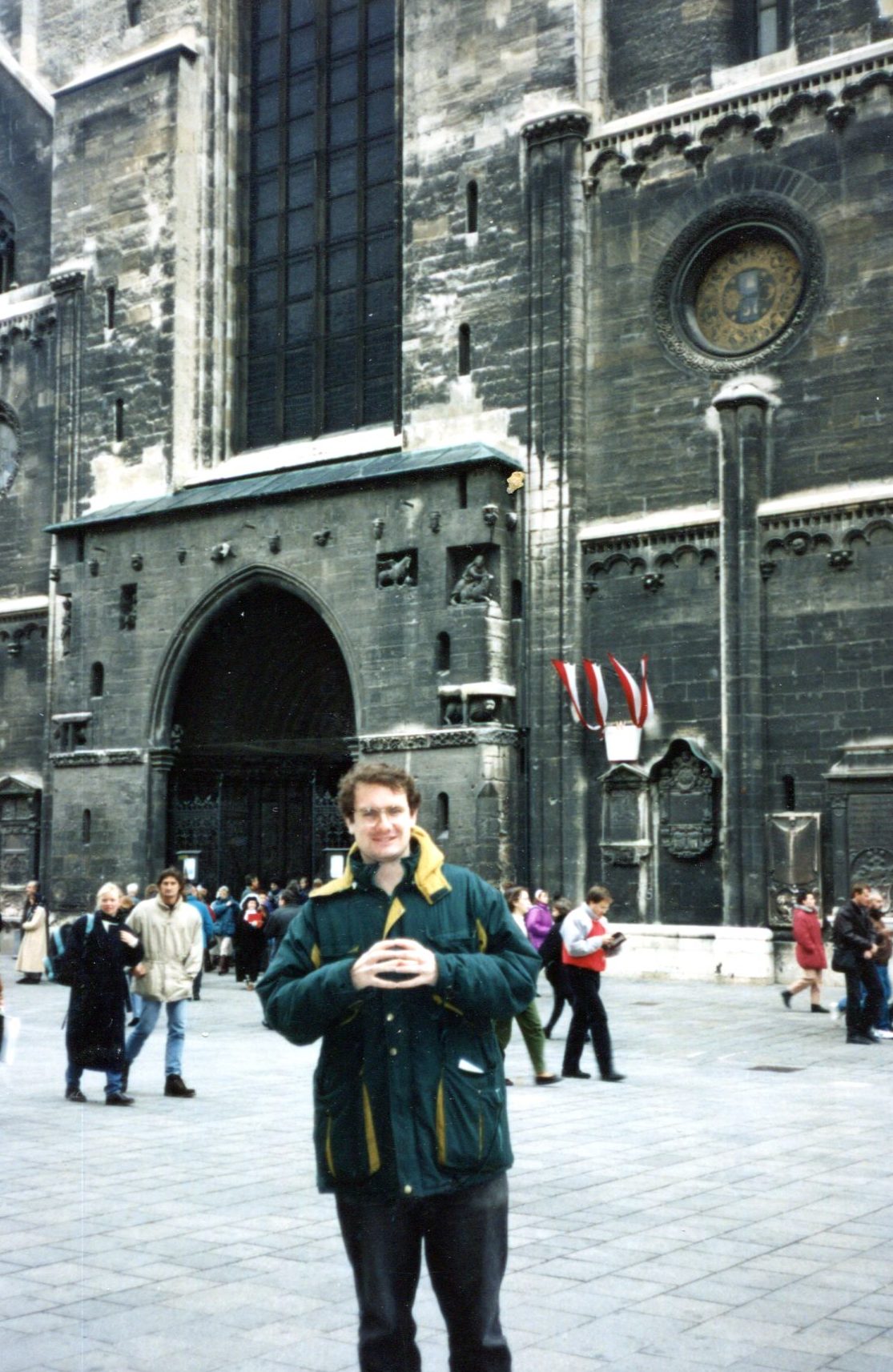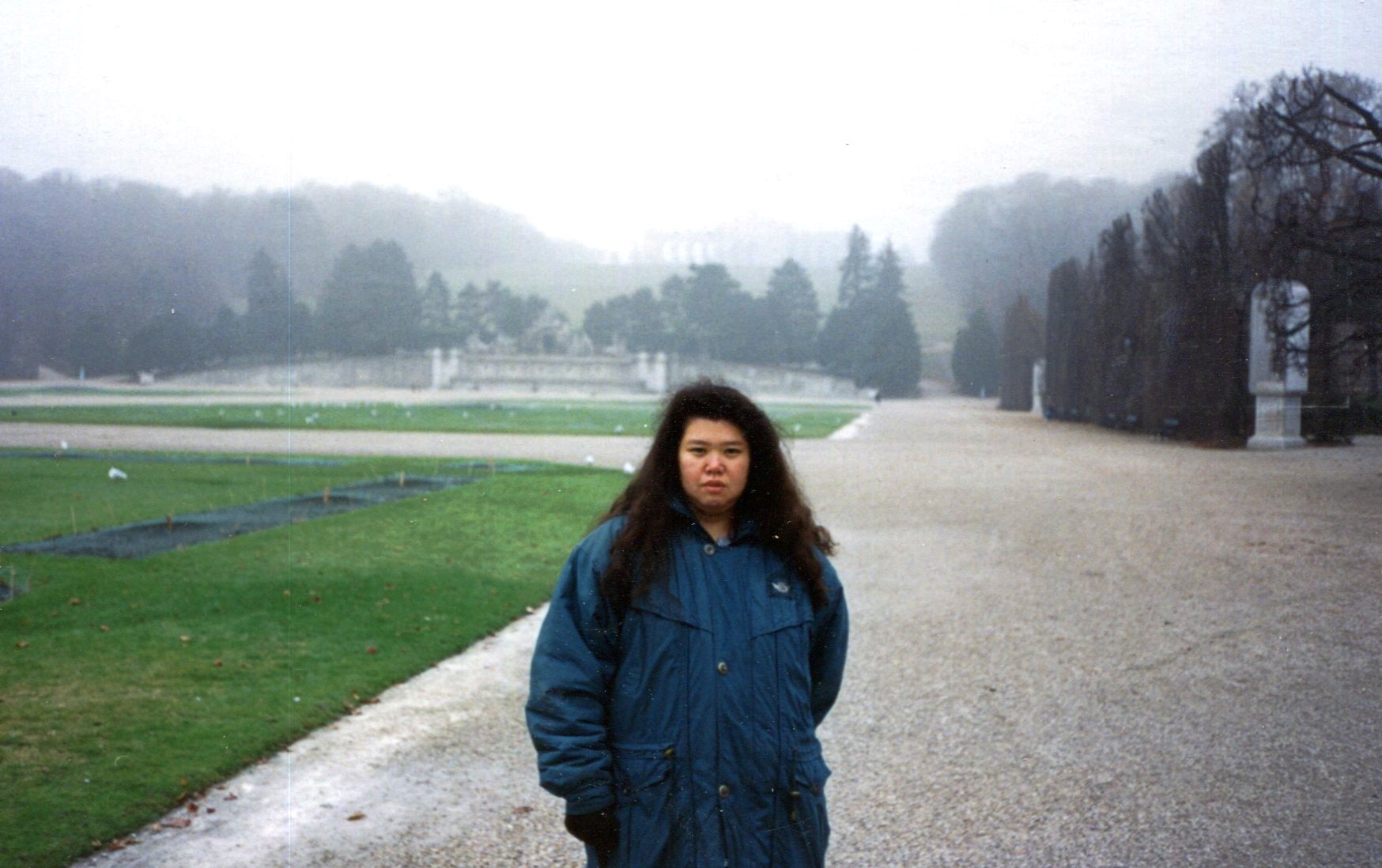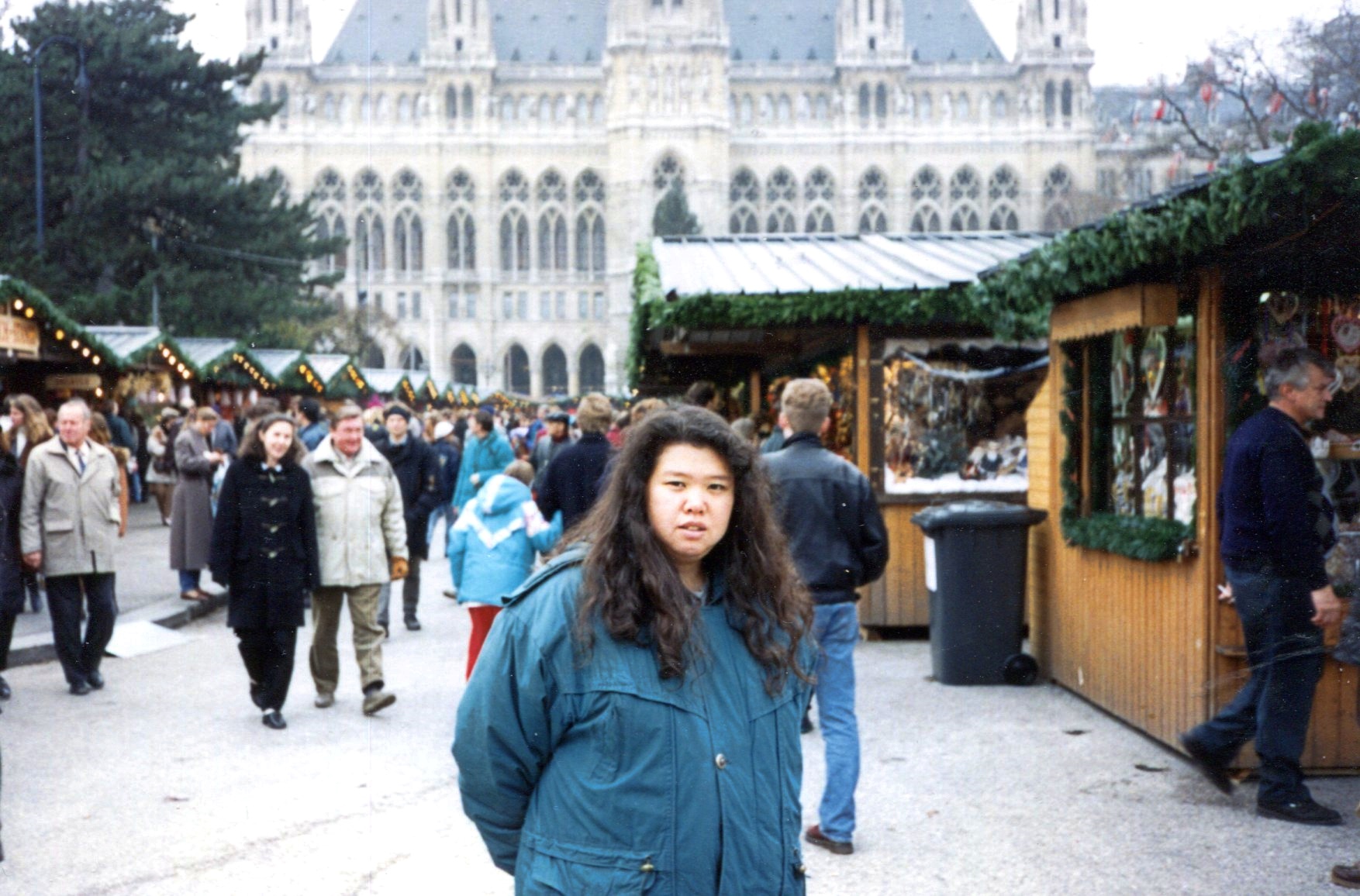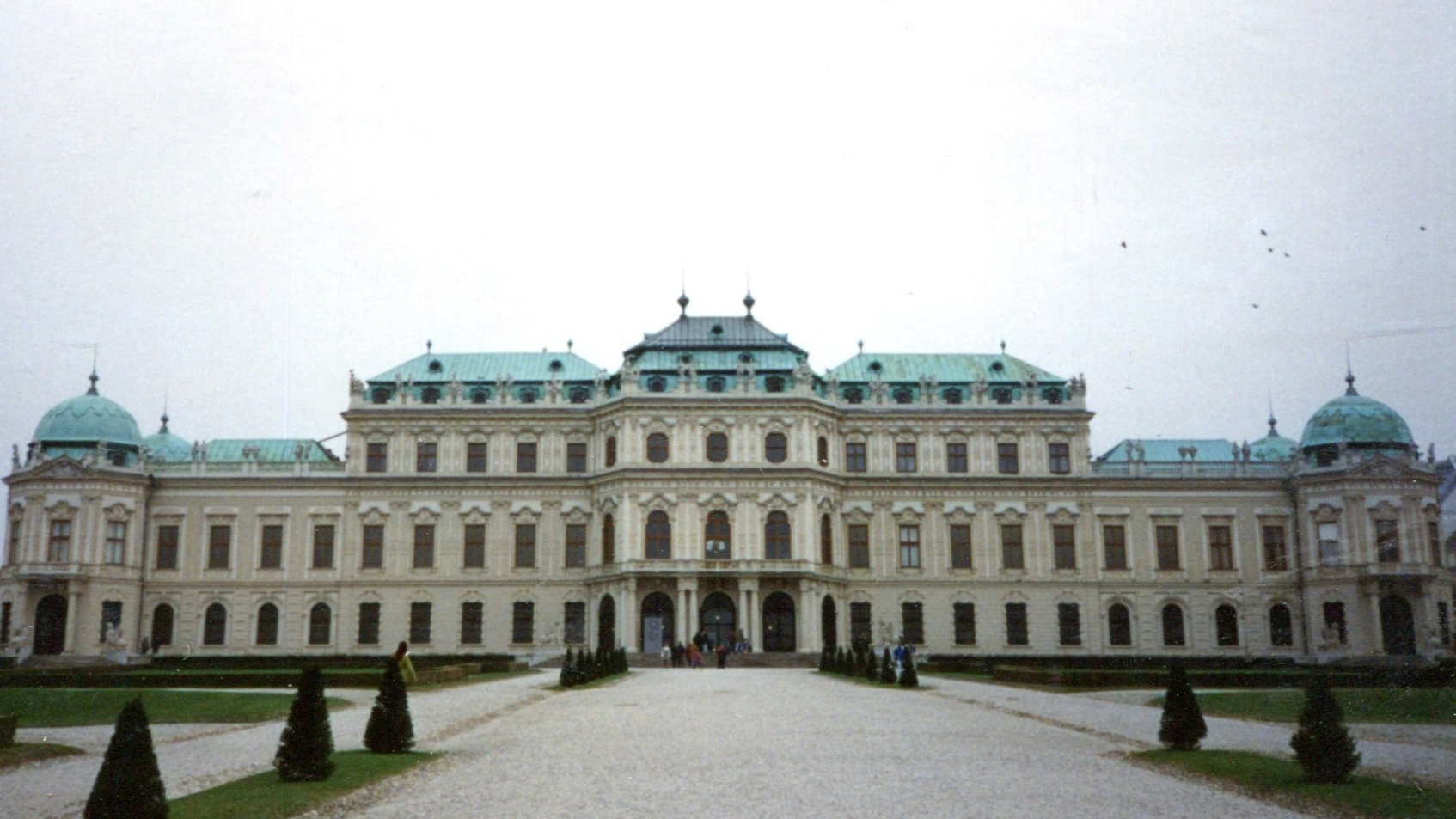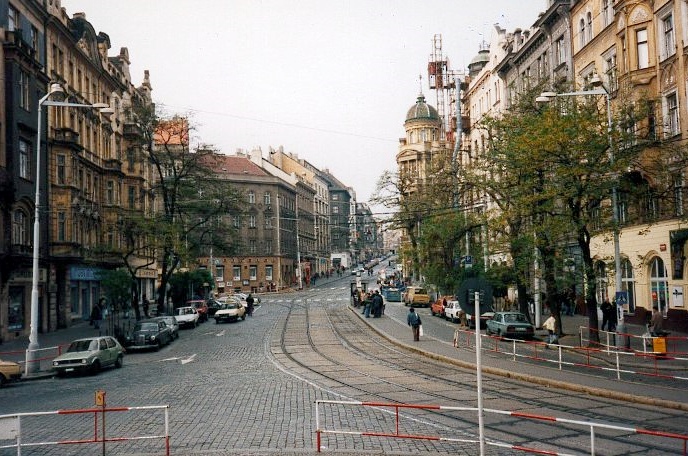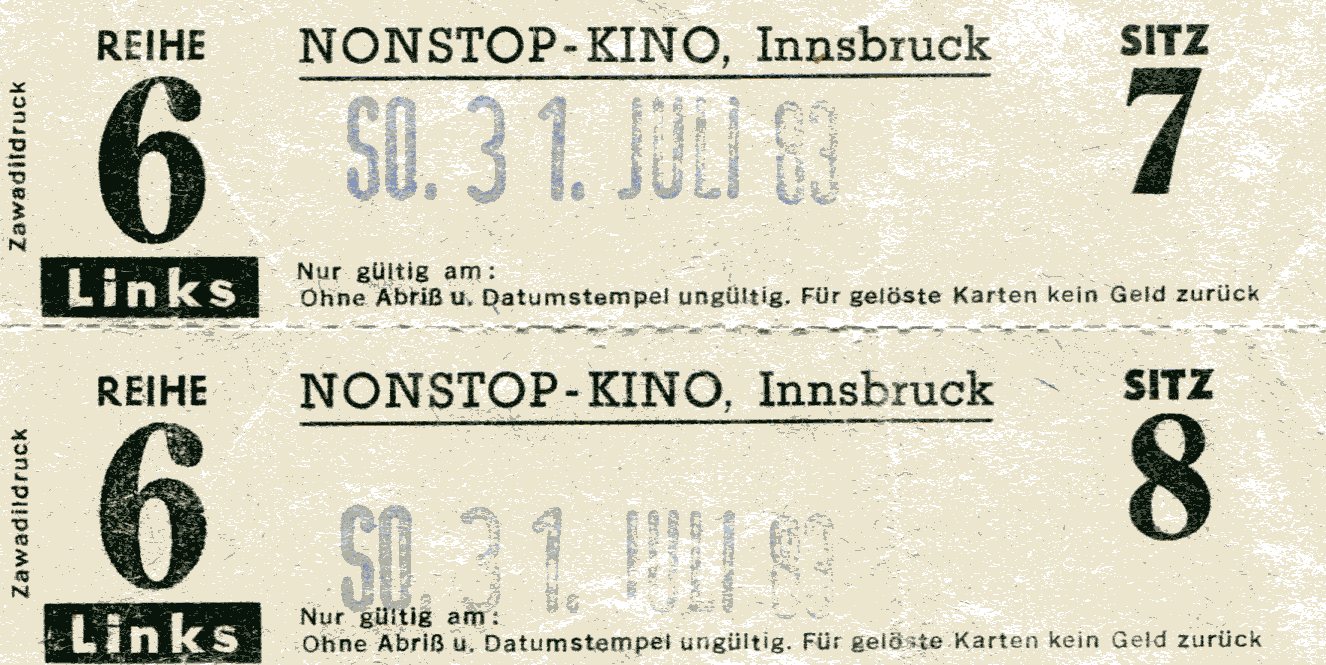This is a beaten-up 8 x 8-inch print, very old itself, of an image I’m pretty sure my father took when he was in Europe with the U.S. Army in the mid-50s. I haven’t found the source image, probably a b&w negative, though I haven’t been looking very hard.
I brought the print home from a recent visit to San Antonio, especially taken with the composition. Moves right up from solidity and the Earth to misty mountains in the Sky. And — those haystacks. What a shot. Dad must have liked the image, too, or he wouldn’t have enlarged it (I’m assuming he did).
No note of time or place is on the back, but it was enough to for me to think, Somewhere in Germany, ca. 1955.
The other day I looked at it closer, and noticed the words written on the building: Landhaus Elfriede.
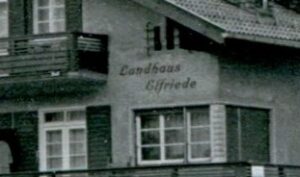 German all right. Something to put into a search engine. I was mildly surprised to find an existing establishment of that name near Fitzmoos, Austria. Or as its web site says, “ein paar Autominuten vom Zentrum Filzmoos.”
German all right. Something to put into a search engine. I was mildly surprised to find an existing establishment of that name near Fitzmoos, Austria. Or as its web site says, “ein paar Autominuten vom Zentrum Filzmoos.”
The building pictured on the web site is some different from my father’s image, though their roofs are compellingly similar. You could argue — and I am going to argue — that the similarity is close enough, with any differences between the two attributable to rehab, renovation or fix-up-the-damn-thing efforts over the last 65 years. Now it rents apartments on a short-term basis.
It’s also reasonable to think my parents stayed there while on leave, because of course they did — it’s in the Alps, for crying out loud (and near Salzburg, besides). I like to think the mountains behind the Landhaus Elfriede, which are only faintly pictured in Dad’s photo, mightily impressed my parents, who grew up among hills and flats but not mountains.

